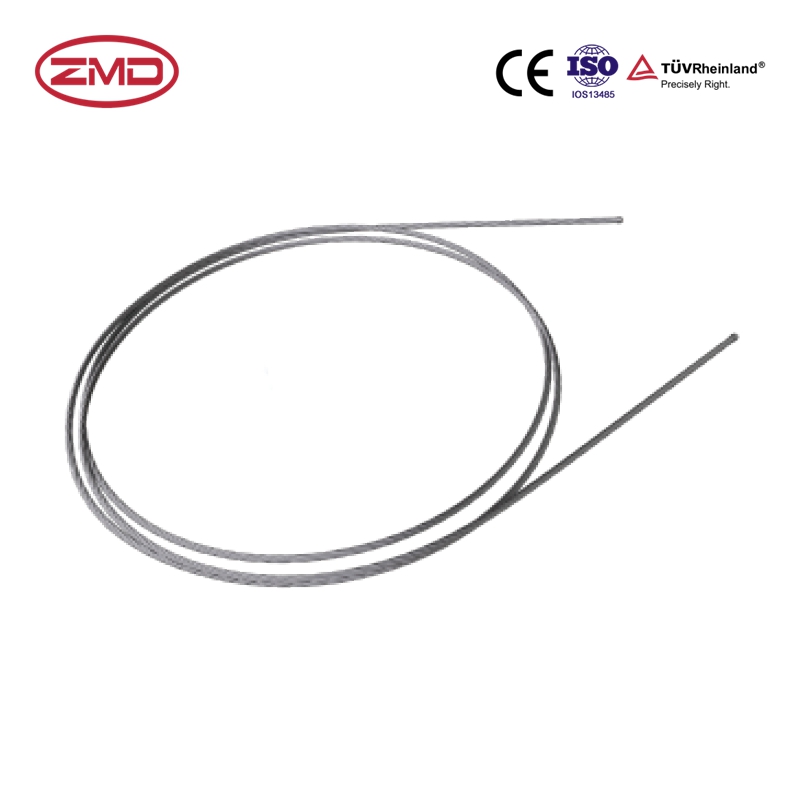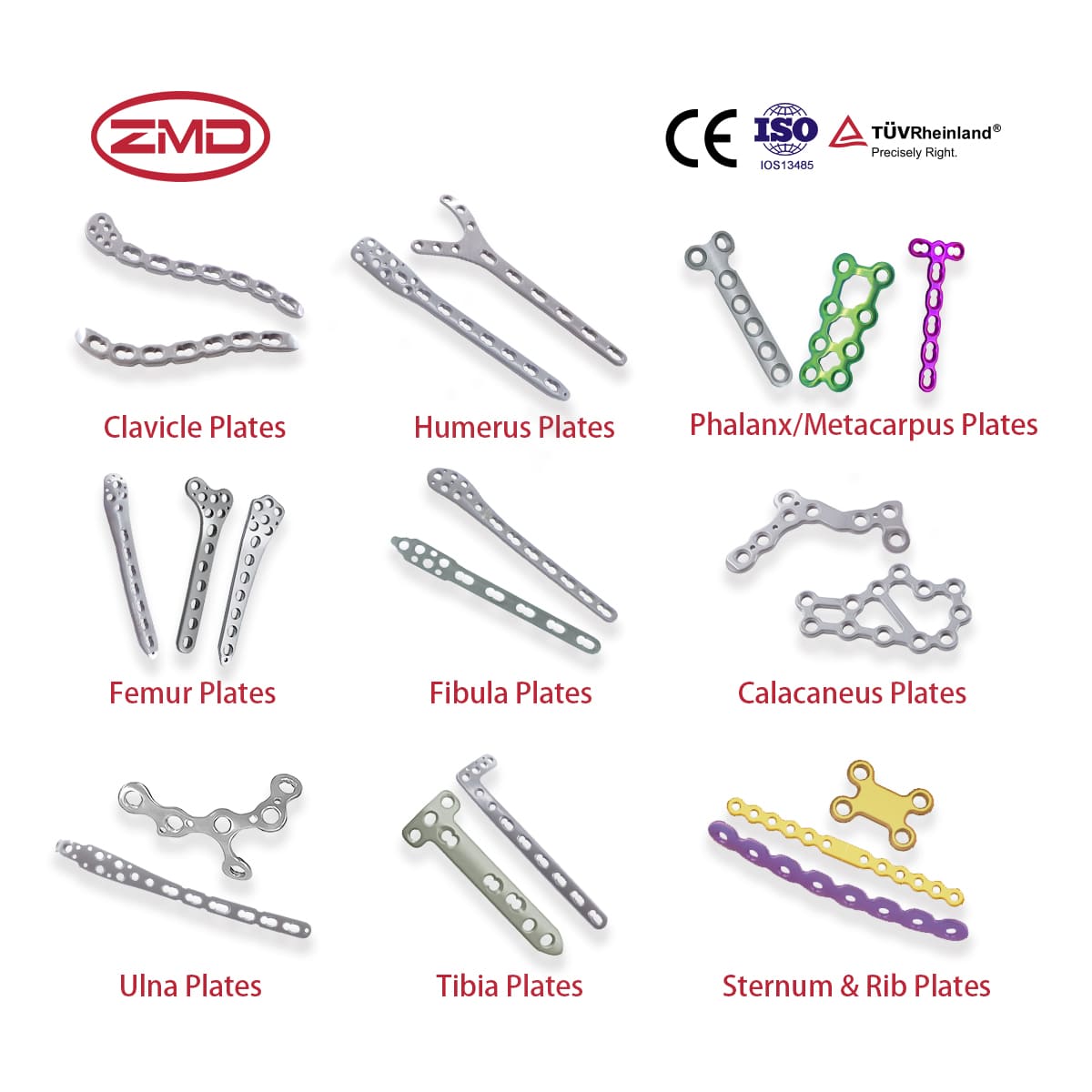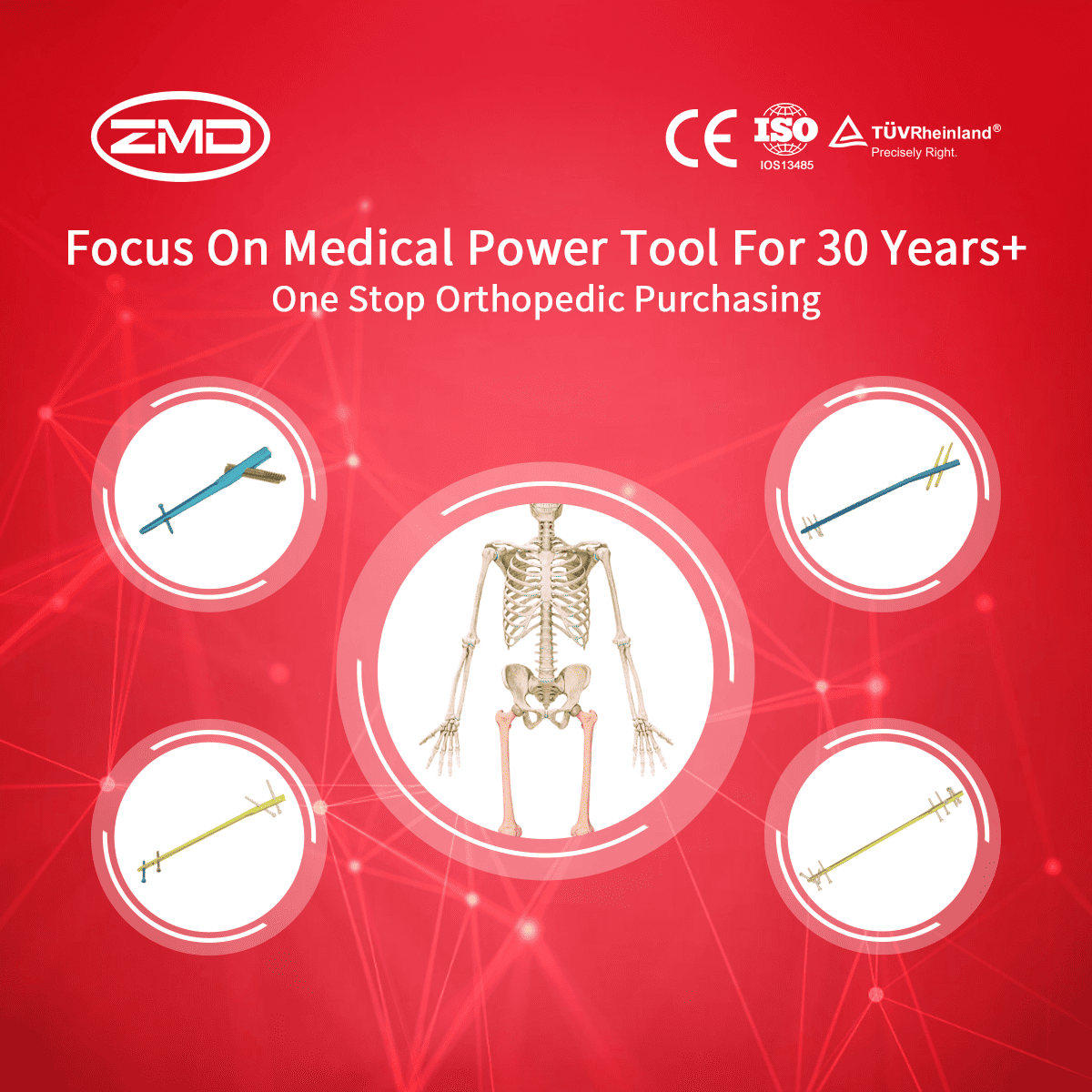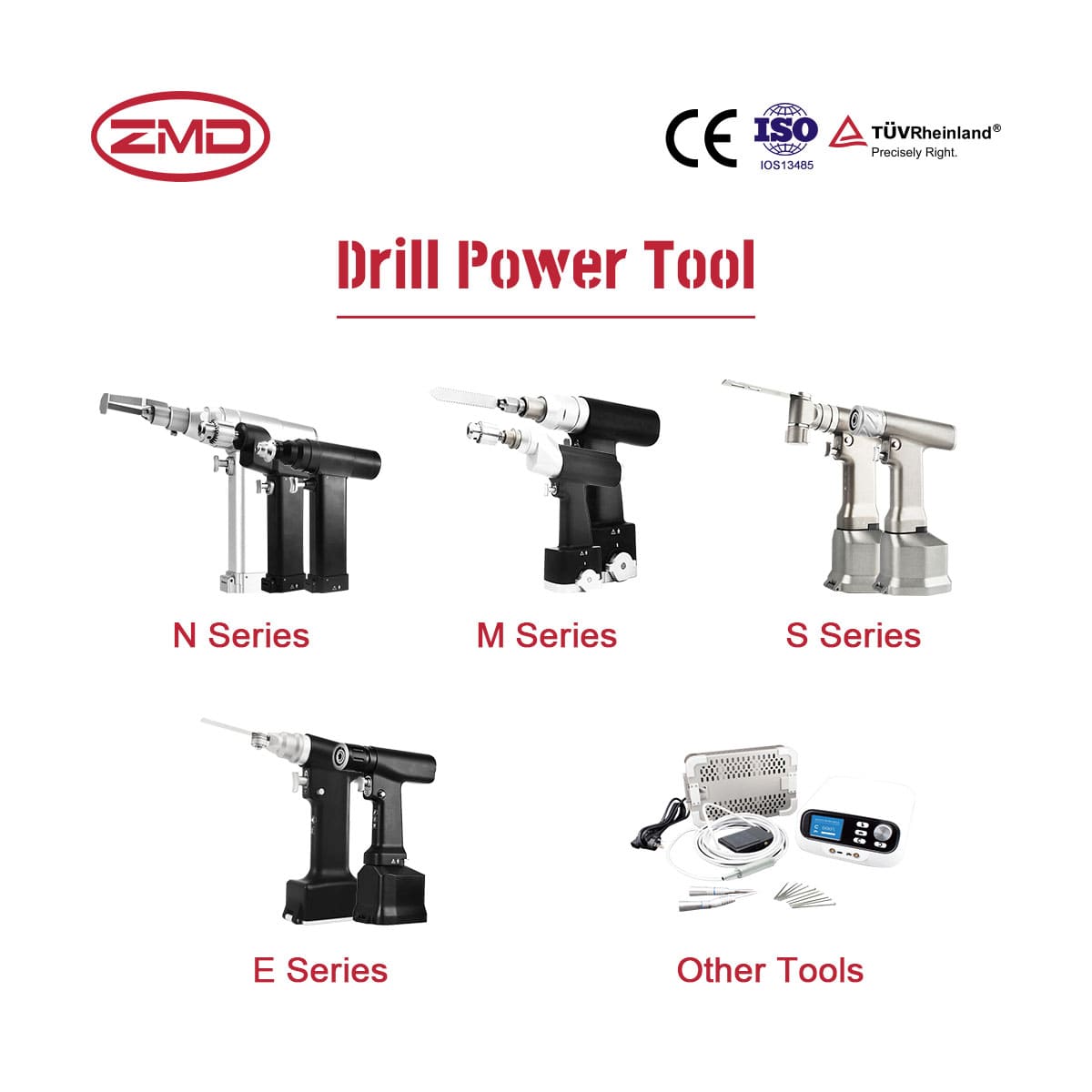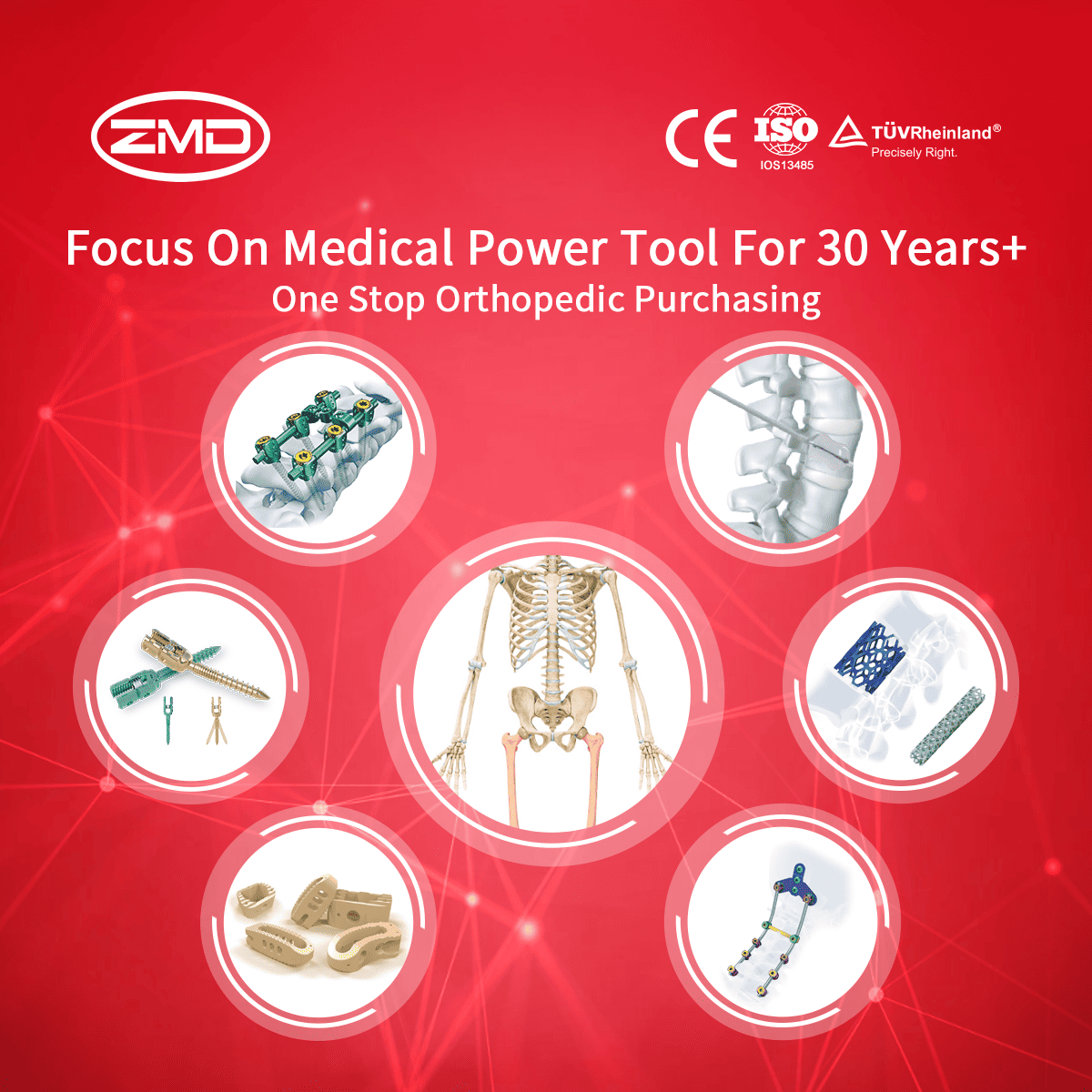Titanium Cable
ZMD
Orthopedic Products
Haven't been able to locate the product you're searching for yet?
If you're interested in more orthopaedic implant products, feel free to get in touch with our ZMD consultants.
What are Orthopaedic Cable Systems?
Orthopaedic cable systems are internal fixation devices. They’re used to stabilize bone fractures, especially when traditional plates and screws aren’t a good fit. They’re flexible and can adapt to different bone geometries and fracture patterns. They cause less soft tissue trauma during surgery and have enhanced biomechanical properties, sharing the load with the bone. They can be used in both open and minimally invasive surgeries, giving surgeons more treatment options.
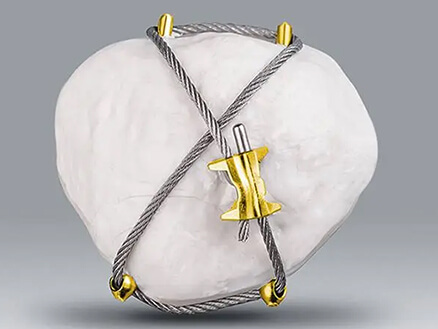
- Titanium Cable: Made of biocompatible titanium and available in different diameters for various fracture needs.
- Cable Lock Catch: Secures the cable to the bone and has different designs for different plates and bones.
- Femoral Proximal Hook Locking Plate: Used in proximal femoral fractures. It gives strong fixation and permits early weight-bearing, which is crucial for patient rehabilitation.
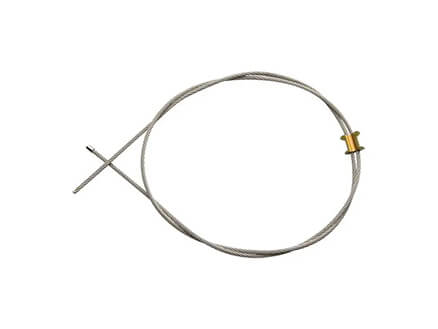
When Are Orthopaedic Cable Systems Needed?
They’re used for fractures in osteoporotic bones. In such cases, the weakened bone structure requires a fixation method that can provide stability without causing further damage. The cable system’s ability to handle different bone qualities makes it a good choice.
- Complex Fractures: When dealing with fractures having multiple fragments or intricate patterns that are tough for regular fixation methods. Their flexibility to fit irregular bone shapes and offer multi-directional fixation makes them useful.
- Osteoporotic Bone: In patients with low bone density due to osteopenia or osteoporosis. Traditional plate-and-screw fixation may not be stable enough, but cable systems can evenly distribute stress and minimize compression, so they’re preferred.
- Minimally Invasive Surgery: For procedures aiming for smaller incisions and less tissue damage. They can provide stable fixation with less dissection, helping in quicker recovery during minimally invasive fracture repair.
- Fractures in Specific Locations: Like at the distal radius, distal tibia, or acetabulum. The complex bone geometries and need for multi-angle fixation there make cable systems effective.
- Temporary Fixation and Prophylactic Banding: They can act as temporary fixators during final fracture treatment or for preventive banding in joint procedures, thanks to their versatility.
- Revision Surgery: In cases of failed previous internal fixation. They can enhance stability and deal with bone loss or damage from the initial procedure by securing cables in different ways.
- Fractures in Children: As children’s bones are smaller and more delicate, specialized pediatric cable systems offer suitable fixation options for their fractures.
Blog
International Women’s Day: Salute to the “She – Power” at ZMD
International Women’s Day: Salute to the “She – Power” at ZMD Amid the trends of “Intelligent Medical Devices” and “Minimally Invasive Medical Technologies”, ZMD thrives
Discover Innovation with Sunan Medical at AAOS
Discover Innovation with Sunan Medical at AAOS The American Academy of Orthopaedic Surgeons (AAOS) Annual Meeting is the premier event for orthopedic professionals worldwide, offering
Visit Us at Expomed Eurasia 2025: Discover Sunan Medical’s Innovations
Visit Us at Expomed Eurasia 2025: Discover Sunan Medical’s Innovations The 32nd Expomed Eurasia, taking place from April 24-26, 2025, at the Tüyap Exhibition and

